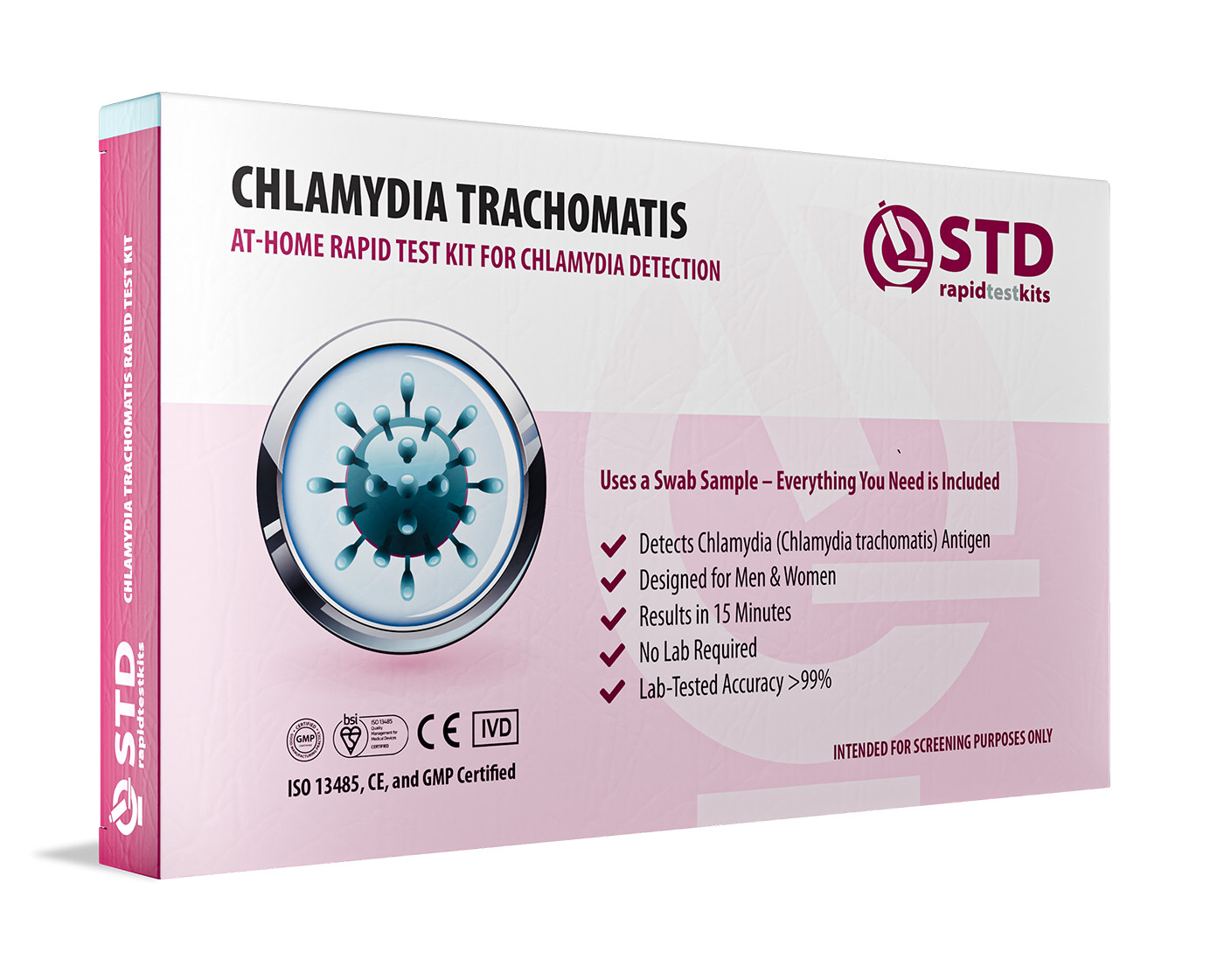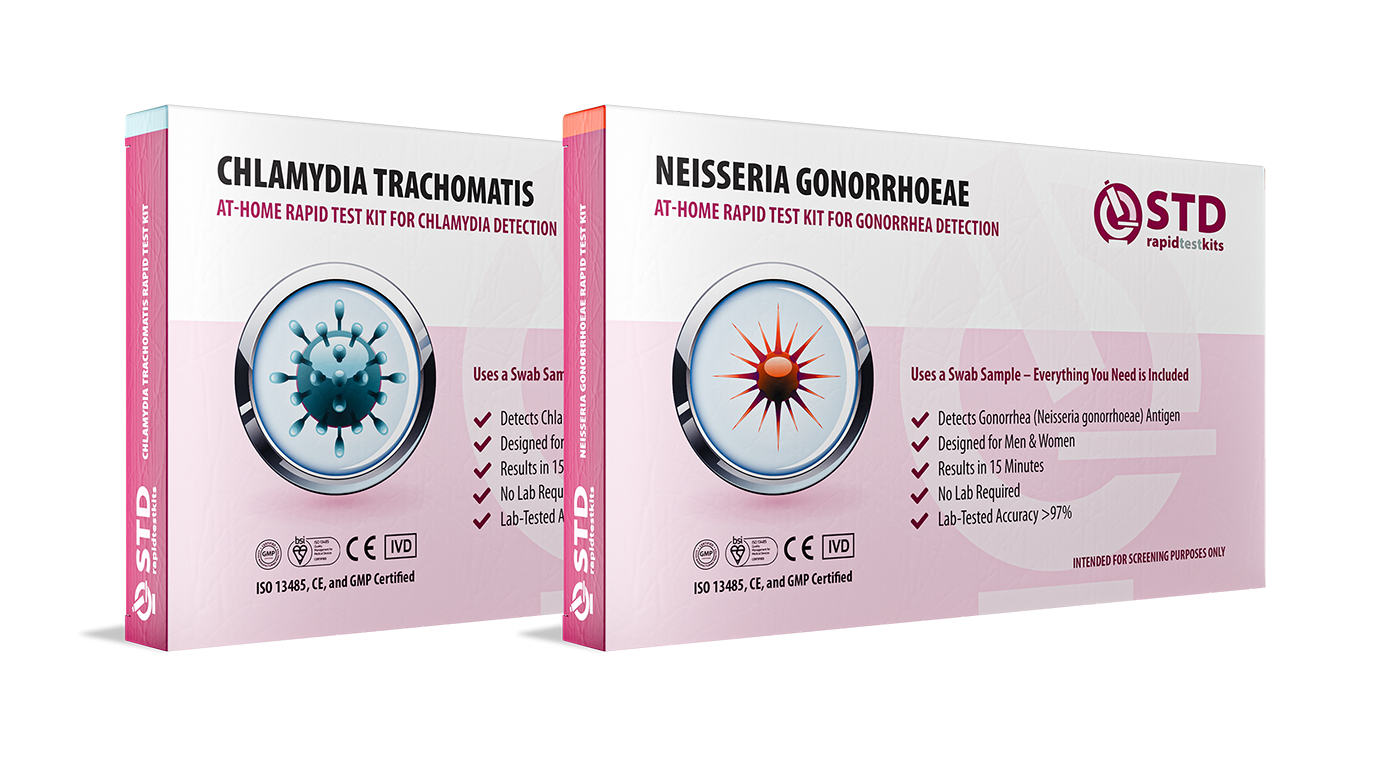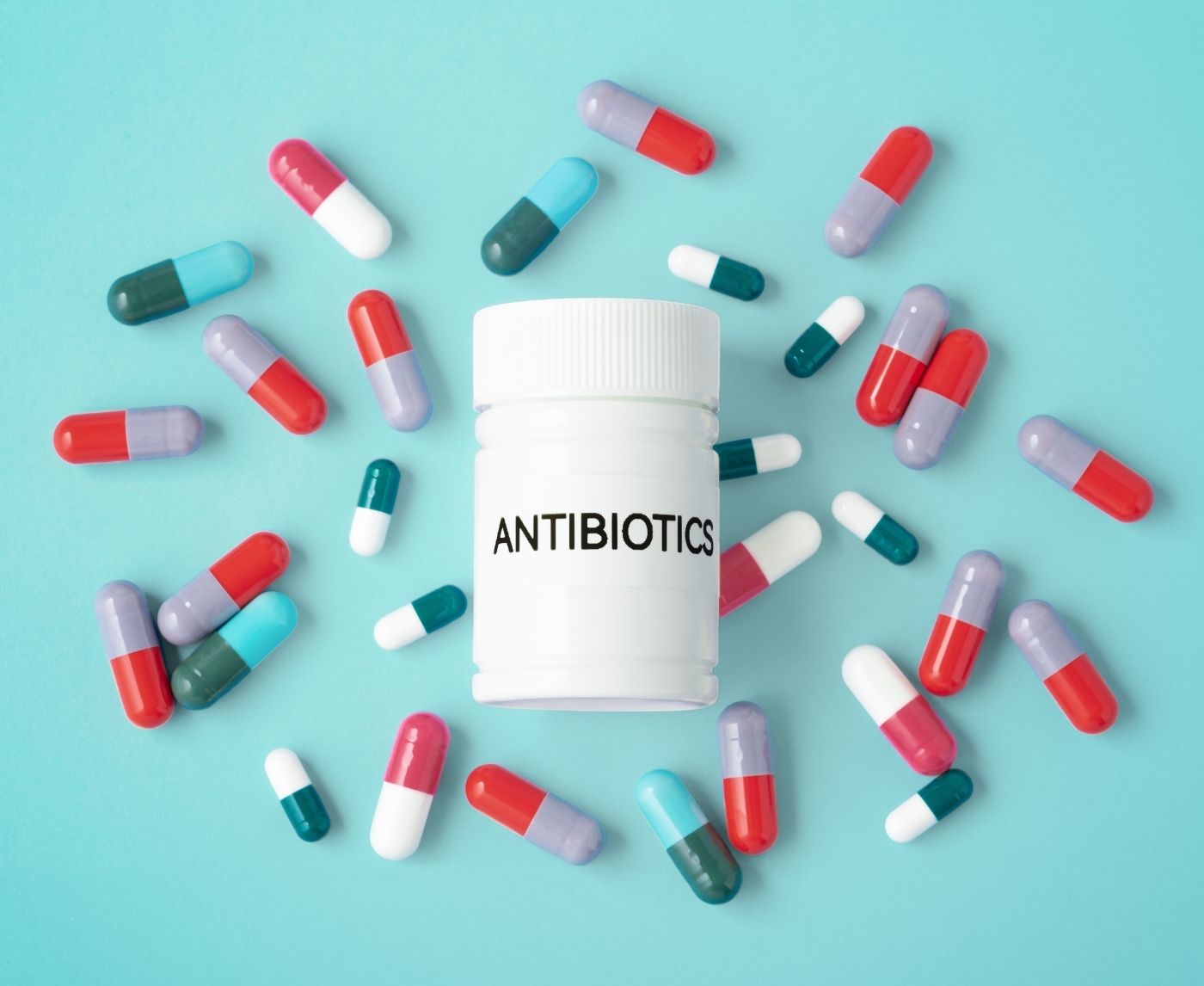Is That Faint Line a Positive Chlamydia Test? What It Really Means
Chlamydia Treatment: Why It’s an Urgent Health Crisis
Chlamydia isn’t just the most common bacterial STD in the world, it’s also one of the most dangerously deceptive. In the U.S. alone, the CDC estimates nearly 1.6 million new reported cases every year, and experts believe the real number is much higher thanks to silent infections that go undetected. Globally, the World Health Organization reports that chlamydia affects more than 129 million people annually, a staggering epidemic that cuts across age, gender, and geography.
What makes chlamydia so terrifying isn't just the numbers, it’s the way it lurks undetected, sabotaging bodies from the inside out. Up to 70% of women and 50% of men infected with chlamydia show no symptoms at all. No warning signs. No obvious alarms. Just a silent invasion that quietly climbs your reproductive tract, inching toward disaster.
In women, untreated chlamydia can ascend from the cervix into the uterus, fallopian tubes, and ovaries, leading to scarring, chronic pelvic pain, and Pelvic Inflammatory Disease (PID), a condition that can destroy fertility forever. A single untreated infection can leave a woman unable to conceive, often without her ever knowing what happened. In men, chlamydia can inflame the epididymis (the tube that carries sperm), potentially leading to pain, swelling, and infertility.
And it gets worse: an untreated chlamydia infection dramatically increases susceptibility to HIV. Open lesions and chronic inflammation from chlamydia make it easier for HIV to cross mucosal barriers, turning a manageable STD into a life-altering diagnosis.
The risks aren't just personal, they ripple outward. Each untreated person can unknowingly spread the infection to new partners, fueling a cycle of transmission that public health systems struggle to contain. But here’s the silver lining: chlamydia is highly curable, if caught and treated early.
The culprit, Chlamydia trachomatis, is a bacterial organism vulnerable to several targeted antibiotics. With the right medication at the right time, you can stop the infection in its tracks and prevent irreversible harm.
However, timing is critical. Every day you delay treatment, the bacteria burrow deeper into sensitive tissues. Every missed diagnosis is an opportunity for it to cause:
- Pelvic Inflammatory Disease (PID), scarring reproductive organs and causing chronic pain.
- Ectopic Pregnancy, a life-threatening condition where a fertilized egg implants outside the uterus.
- Infertility, devastating for those hoping to have biological children.
- Increased HIV Risk, leaving you vulnerable to one of the most serious viral infections known to medicine.
The clock starts ticking the moment chlamydia enters your body, and the faster you act, the fewer chances it has to wreak havoc.
Key Benefits of Fast, Proper Chlamydia Treatment
When it comes to chlamydia, speed isn’t just nice, it’s everything. Hitting the infection early with the right antibiotic can mean the difference between a minor, quickly forgotten blip on your health radar and a devastating, life-changing medical ordeal. Every hour you wait gives chlamydia more time to do damage. Every day you act early stacks the odds in your favor. The benefits of rapid treatment aren’t just massive, they’re absolutely life-saving.
Rapid Symptom Relief
When you’re living with chlamydia, every second can feel like torture. Burning during urination, painful intercourse, abnormal discharge, these symptoms aren’t just physically uncomfortable, they can chip away at your mental health, your self-esteem, and even your relationships. Fortunately, the right antibiotics, like doxycycline or azithromycin, often start working within 24 to 48 hours. That means noticeable relief from the burning, itching, or discharge soon after you pop your first pill. It's not just about ending discomfort, it’s about taking back control of your body, fast.
Protection Against Serious Complications
What many people don't realize is that chlamydia’s damage doesn't stop at annoying symptoms, it can be catastrophic internally. When untreated, chlamydia can silently cause Pelvic Inflammatory Disease (PID), which scars the fallopian tubes and can make natural conception impossible. It can cause ectopic pregnancies that are life-threatening. It can leave men infertile by scarring the epididymis, the tube sperm must travel through to reach the outside world. Quick, appropriate antibiotic treatment slices the risk of these outcomes dramatically. You’re not just treating an infection, you're protecting your future ability to have children, to enjoy pain-free intimacy, and to avoid surgeries or hospitalizations.
Preventing Spread to Others
Chlamydia isn’t just a personal issue, it’s a community one. While you’re infected, you’re highly contagious, even if you feel completely fine. Fast treatment stops the spread in its tracks. Every time you treat yourself quickly, you're protecting partners, both current and future. You’re protecting friends, friends of friends, and countless strangers you'll never even meet. And it’s not just about kindness; public health studies show that early treatment of STDs reduces transmission rates dramatically at the population level. It’s the ultimate act of responsibility, and honestly, heroism.
Peace of Mind
Let’s not underestimate the emotional wreckage that a chlamydia diagnosis can cause. The anxiety, the fear, the self-blame, the frantic Googling at 2 a.m., it’s exhausting and isolating. Fast treatment isn’t just about clearing bacteria from your body; it’s about clearing fear from your mind. Starting antibiotics quickly brings a powerful emotional shift: you move from panic and helplessness to empowerment and control. Taking action means you’re no longer a passive victim of an infection, you're the one steering the ship again. And that emotional strength? It's just as important to your overall health as the antibiotics themselves.
Cost Savings
In medicine, delays are expensive. Ignore chlamydia long enough, and you could face astronomical bills for surgeries, fertility treatments, or hospital stays. Early antibiotic treatment, typically low-cost and sometimes even free at public health clinics, can save you thousands of dollars down the line. It means fewer doctor visits, no expensive imaging tests to check for reproductive damage, and no costly fertility interventions later. Fast treatment isn’t just a health decision; it’s a financial no-brainer.
Check Your STD Status in Minutes
Test at Home with RemediumChlamydia Test Kit

 For Men & Women
For Men & Women Results in Minutes
Results in Minutes No Lab Needed
No Lab Needed Private & Discreet
Private & DiscreetOrder Now $33.99 $49.00
Risks of Delaying Chlamydia Treatment (or Choosing the Wrong Antibiotic)
While the right antibiotic can feel like a magic bullet, delay or incorrect medication can set off a chain reaction of problems:
- Silent Progression: Even if you feel fine, the bacteria can be damaging your reproductive organs.
- Drug Resistance: Misuse of antibiotics can create super-strains that are harder (and scarier) to treat.
- Reinfection: Treating yourself but not your partner guarantees you’ll swap chlamydia back and forth.
- Increased HIV Risk: Open sores or inflammation from untreated chlamydia can make HIV transmission easier.
Plus, if you pick up over-the-counter treatments that aren’t meant for chlamydia (like general UTI meds), you’ll not only stay infected, you’ll confuse your doctor later when symptoms get worse.
Which Antibiotics Kill Chlamydia the Fastest?
Doxycycline, The Gold Standard (Most Recommended)
- Dosage: 100 mg orally twice a day for 7 days.
- Effectiveness: >95% cure rate.
- Time to relief: Symptoms often improve in 48–72 hours after starting.
Doxycycline is a tetracycline antibiotic that’s highly effective against chlamydia. It’s currently the CDC’s first-line recommendation because it outperforms others, especially in treating rectal infections (common among MSM, men who have sex with men).
"After just three days on doxycycline, I could already feel the burning vanish," reports Jason, 28, diagnosed during a routine screening.
Azithromycin, The One-Dose Wonder (But Not Always)
- Dosage: 1 gram (1000 mg) in a single oral dose.
- Effectiveness: ~90% cure rate.
- Time to relief: 48–72 hours.
Azithromycin used to be the go-to because it’s easy: one mega-dose and you’re done. But recent studies suggest slightly higher failure rates, especially in rectal infections.
Alternative Antibiotics (For Allergies or Resistance Cases)
- Erythromycin (500 mg four times a day for 7 days)
- Levofloxacin (500 mg once daily for 7 days)
- Ofloxacin (300 mg twice daily for 7 days)
These are usually reserved for special situations, like allergies or drug-resistant strains.
What the Research and Data Show: The Truth Behind the Pills
When it comes to killing chlamydia, not all antibiotics are created equal, and the differences are more than just technical. The research paints a clear picture: the type of antibiotic you take affects how fast you heal, how likely you are to fully recover, and how much risk you carry for lingering or recurring infection. Let’s break it down with the four most commonly prescribed chlamydia treatments and what the evidence says about each:
Doxycycline, The Unmatched Front-Runner
With a cure rate of 95–99% and symptom relief in as little as 48 hours, doxycycline has become the gold standard for a reason. Clinical trials and global treatment guidelines now consistently rank it as the most effective antibiotic, particularly when the infection involves the rectum, something azithromycin struggles with. Its only downside? It requires a 7-day regimen, meaning you have to stay disciplined and complete every dose. But if you're looking for power and precision, this is the antibiotic you want in your corner.
“I felt almost 100% better by day three,” says Josh, 30, who caught chlamydia during a trip abroad. “Doxycycline worked like magic.”
Azithromycin, The One-Dose Wonder with Caveats
Azithromycin’s popularity exploded because of its simplicity, a single 1,000 mg dose taken once and done. With a cure rate of 85–92%, it’s still widely used and sometimes preferred in patients who can’t commit to a weeklong course. But convenience comes at a cost: research shows azithromycin may be less effective for rectal chlamydia, and it has a slightly higher failure rate in general. That said, for certain patients, especially those with poor medication adherence, it’s still a powerful weapon.
“Honestly, I liked not having to remember to take a pill every day,” says Lauren, 22. “I just wish I had known it wasn’t the best option for everyone.”
Erythromycin, Old School, Rough Ride
Erythromycin has been used for decades, but its lower cure rate (80–85%) and higher side effect profile (think nausea, cramps, and fatigue) have made it a backup option rather than a first choice. It takes about 3 to 5 days to start relieving symptoms, which is slower than newer options. Still, for patients who are allergic to both doxycycline and azithromycin, it’s a viable, if less pleasant, fallback.
“I felt awful on erythromycin,” reports Keisha, 27. “But it worked when nothing else could.”
Levofloxacin and Ofloxacin, Effective, but High-End
These antibiotics are typically reserved for specific or resistant cases. With cure rates between 85–90% and symptom improvement in 3–4 days, they’re strong contenders, but they’re also more expensive and sometimes harder to access. They’re usually prescribed when patients can’t tolerate other drugs or have co-infections that require broader-spectrum treatment.
“My doctor switched me to levofloxacin after azithromycin failed,” says Rafael, 35. “It was pricey, but I cleared up fast.”
Key Takeaway
If you want both speed and certainty, doxycycline is your best bet. It’s not the easiest to remember, twice a day for seven days can be a challenge, but when taken properly, it provides the fastest and most reliable path to a full recovery. No matter which option you and your provider choose, the most important factor isn’t just the drug, it’s starting treatment as soon as possible. Because when it comes to chlamydia, hesitation is the real danger.
Check Your STD Status in Minutes
Test at Home with RemediumChlamydia & Gonorrhea Test

 For Men & Women
For Men & Women Results in Minutes
Results in Minutes No Lab Needed
No Lab Needed Private & Discreet
Private & DiscreetOrder Now $49.00 $98.00
For all 2 tests
A Quick Look at the History of Chlamydia Treatment
Back in the 1970s, tetracycline and sulfonamides were the first chlamydia treatments, but they required long courses and had miserable side effects. The 1990s saw the rise of azithromycin, beloved for its one-dose convenience. But by 2020, rising drug resistance and new research swung the pendulum back toward doxycycline as the top performer. Today, we’re in an era of smart, data-driven antibiotic prescribing, and fast, reliable cure rates.
What’s Coming: The Future of Chlamydia Treatment
Scientists are racing to develop:
- Chlamydia vaccines (currently in human trials!)
- Shorter, more effective antibiotic regimens
- At-home prescription models paired with rapid test kits
Experts predict a future where getting diagnosed and treated could be as simple as ordering online, which makes STD Rapid Test Kits more important than ever.
Practical Tips for Real-Life Application
If you test positive for chlamydia:
- Start antibiotics immediately after your doctor prescribes them.
- Avoid sex until you and your partner have both completed treatment.
- Re-test after three months, even if you feel fine.
- Tell partners (awkward, yes, necessary, absolutely).
- Use at-home tests like those from STD Rapid Test Kits to catch any silent reinfections early.
How Chlamydia Impacts Different Industries
- Healthcare: Rising treatment needs increase burden on clinics.
- Pharmaceuticals: Higher demand for next-generation antibiotics.
- Education: College health centers see some of the highest chlamydia rates.
- Public Health: Budget cuts threaten screening programs, risking outbreaks.
Real Voices: Chlamydia Testimonials
"I was embarrassed to tell my boyfriend, but we both got tested and treated the same day. Doxycycline saved our relationship, and my future fertility." Maria, 23
"One quick online order from an at-home test kit changed everything. If I hadn't caught it early, I might never have known." Lex, 32
Busted: Common Chlamydia Myths
"I can get rid of it by drinking cranberry juice."
Nope, only antibiotics can kill chlamydia.
"If I have no symptoms, I don’t need treatment."
Silent infections still cause permanent damage.
"I only need treatment if I'm a woman."
Men get chlamydia too, and untreated, it can cause epididymitis and infertility.
Check Your STD Status in Minutes
Test at Home with Remedium7-in-1 STD Test Kit

 For Men & Women
For Men & Women Results in Minutes
Results in Minutes No Lab Needed
No Lab Needed Private & Discreet
Private & DiscreetOrder Now $129.00 $343.00
For all 7 tests
FAQs
1. Can chlamydia go away without antibiotics?
No, it needs proper antibiotic treatment.
2. How soon after antibiotics am I no longer contagious?
Usually 7 days after completing treatment.
3. Can I have sex during treatment?
Hard no. Wait until fully finished and cleared.
4. What happens if I miss a dose of doxycycline?
Take it as soon as possible but don’t double up without guidance.
5. How do I know if antibiotics are working?
Symptoms improve within 1–3 days; full cure after course completion.
6. Can chlamydia come back after treatment?
Yes, especially if partners aren’t treated or if re-exposed.
7. Is azithromycin still used for chlamydia?
Yes, but doxycycline is often preferred now.
8. Is chlamydia treatment free?
Many public health clinics offer it free or low-cost.
9. How do I get antibiotics discreetly?
After an at-home test kit like those from STD Rapid Test Kits, some services can arrange online prescriptions.
10. Can I drink alcohol while taking doxycycline?
It’s best to avoid, alcohol can reduce effectiveness.
Take Action Before It’s Too Late
Chlamydia doesn't care if you’re scared, busy, or hoping it will magically go away. It keeps working silently in the background, causing damage you can’t feel, until it’s too late. But you’re smarter than chlamydia.
You can test at home, treat fast, and protect your future, starting today. Order a confidential kit at STD Rapid Test Kits, talk to a doctor, and get the right antibiotics before you feel another day of doubt. Your body, and your future self, will thank you.
Sources
1. CDC 2021 STI Treatment Guidelines – Chlamydia
2. WHO – Chlamydia trachomatis Fact Sheet
3. Mayo Clinic – Chlamydia: Symptoms and Treatment
4. NIH – Comparative Effectiveness of Antibiotics for Chlamydia










